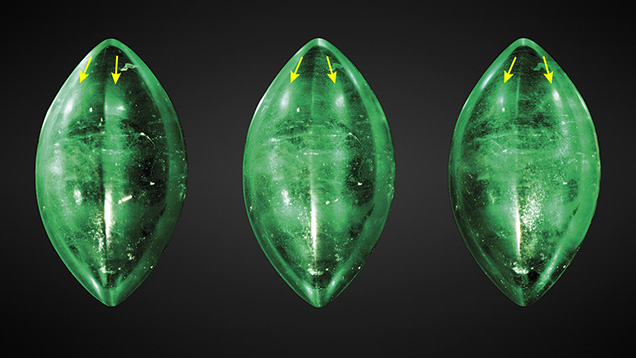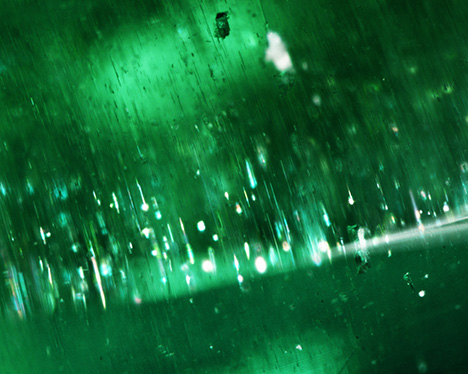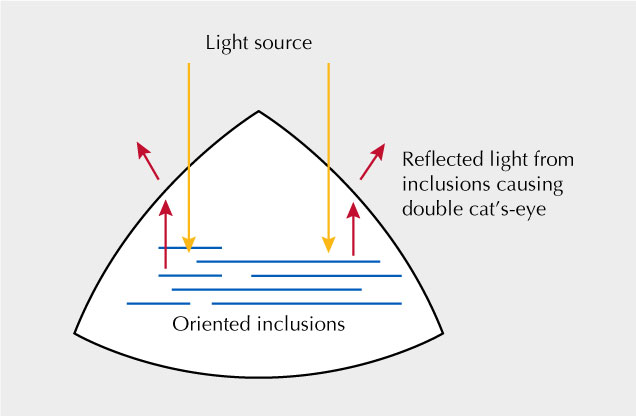A Unique Double Cat’s-Eye Emerald

Chatoyancy is generally produced by light reflection from numerous parallel needle-like inclusions or fibrous structures when a stone is skillfully fashioned as a cabochon. Stones such as emerald, chrysoberyl, and scapolite are known for the cat’s-eye effect (see Summer 2015 Gems News International, pp. 200–201). Recently GIA’s Tokyo laboratory examined a unique green marquise double-cabochon stone, weighing 1.93 ct and measuring 11.88 × 6.68 × 4.79 mm, that offered a particularly interesting example of chatoyancy (figure 1).


This stone had a spot refractive index of 1.58 and a specific gravity of 2.74, and standard gemological properties indicated that it was emerald. The stone characteristically had a ridgeline and a high-dome structure (figure 2) containing numerous reflective oriented needles and tubes (figure 3) parallel to the width and perpendicular to the length of the stone. It was noteworthy that the light reflection from the inclusions created two distinct chatoyant bands along the length of the ridgeline (figure 1) under overhead light. These chatoyant bands were observed from different angles of lighting, as shown in figure 1. This double cat’s-eye effect might result from a combination of face angles, inclusions, and the high-dome cabochon structure and ridgeline.

Such an unusual cutting style could be responsible for creating this double cat’s-eye (figure 4). The principle of double cat’s-eye seen in this emerald is different from those of the dual-color double star effect rarely seen in ruby, sapphire, and quartz (e.g., K. Schmetzer et al., “Dual-color double stars in ruby, sapphire, and quartz: Cause and historical account,” Summer 2015 G&G, pp. 112–143). This is a unique example of an unusual optical effect due to the cutting style and inclusion scene.



